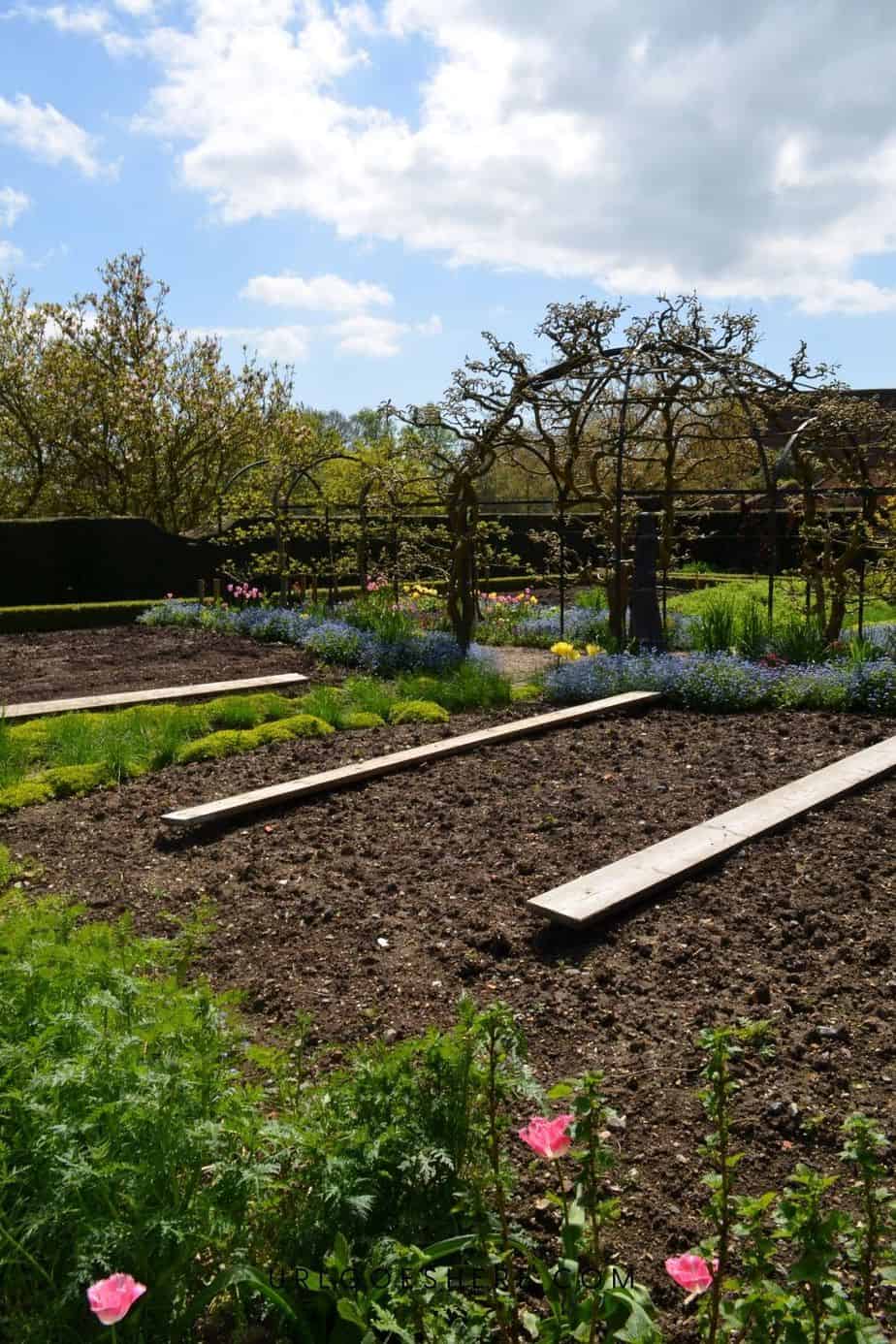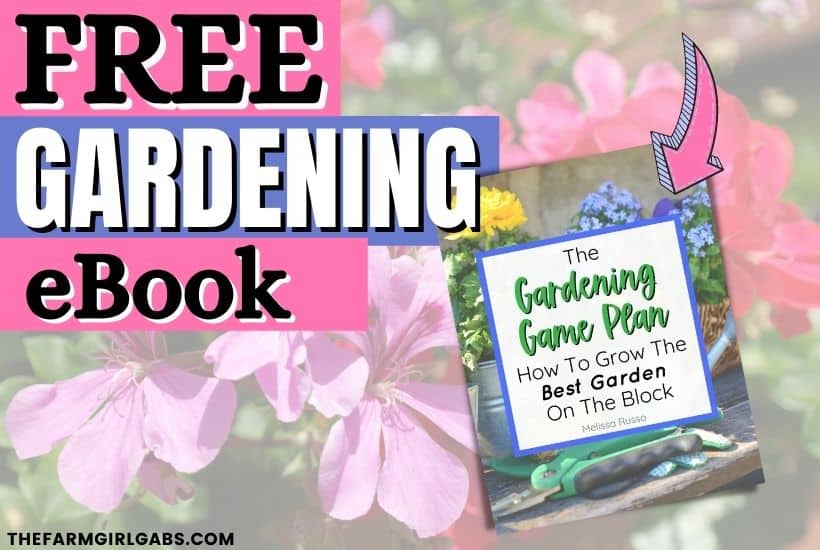How To Prepare A New Garden Bed
Ready to dig in and start gardening? Follow these beginner gardening tips for How To Prepare A New Garden Bed. Learn how to grow the best garden on the block.

This post may contain affiliate links. We may receive a commission if you click and purchase something. Please see our disclosure policy for more details.
Starting your first garden can be a little confusing. While most people seem to prefer building above-ground garden beds this is not always an option for everyone. The cost of raised garden needs and the requirement of finding soil to fill them can be a major deterrent. But the good news is that you can do an old-fashioned in-ground garden bed.
How To Prepare A New Garden Bed
When prepping an in-ground garden bed, moving it is not an option like with potted or more portable above-ground garden options. This means you need to decide where to place your garden before you begin to dig. Consider what you plan on planting. Most vegetable garden beds will need to be placed in full sun. Some leafy greens can grow well in shady areas allowing you to take advantage of more of your yard.
Mark off the area you plan to dig so you can stay within the marks. This will make your garden bed look more even and make planning your garden bed easier.
Dig up the top layer to remove the grass. Grass can be a difficult ground cover to remove quickly for growing food but you can make quick work of it with a large shovel. Shake out the grass in an effort to remove excess soil that you use in your garden. At this point remove the roots to any weeds in your garden. This will prevent them from sprouting back up for you to weed later.

If you have a tiller you can till the soil the easy way but you can dig and till up a garden bed with some elbow grease and a shovel. A cultivator or garden hoe can make for less work when hand tilling your new in ground garden bed. Tillin is the perfect time to add soil amendments. Remove rocks as you till.
Soil amendments are easy to add to your would to improve the quality of even the worst nutrition issues in the ground soil. Quality compost, eggshells, old dried mulch or fall leaves all make great actions to your garden soil that can be tilled in during this process.
Adding amendments to your in-ground garden soil is vital if you do not have very fertile soil to give your garden the best chance. If your soil doesn’t grow grass and weeds well before you decide to dig it up, check the PH level of the soil and adjust the PH with amendments.
After your soil is ready add some definition to your garden bed to help slow weeds slipping back in. This can be as simple as some cheap garden edging or make use of rocks or bricks you have available to you.
After you have planted your garden bed you want to prepare it for the summer. Add plenty of mulch to your garden bed to prevent the soil from drying out in the summer sun. Mulching also helps to reduce how much weeding you need to do to keep your garden healthy. You can add a layer of cardboard or grass clippings under more decorative mulch over top to lower the cost.
Check out these Gardening Tips
Tips for Planting A Vegetable Garden
Easy Vegetables To Grow In Your Garden
The Best Perennials For Early Spring
Free Vegetable Gardening Guide
10 Spring Gardening Clean Up Tips
Save these gardening tips for beginners. Pin the image below to your favorite Pinterest Board.

I’m impressed, I need to say. Really hardly ever do I encounter a weblog that’s each educative and entertaining, and let me tell you, you’ve gotten hit the nail on the head. Your idea is outstanding; the difficulty is something that not sufficient persons are speaking intelligently about. I am very pleased that I stumbled throughout this in my search for one thing referring to this.
I enjoy the efforts you have put in this, thank you for all the great posts.
Really informative and great structure of articles, now that’s user friendly (:.
Amazing! This blog looks just like my old one! It’s on a totally different subject but it has pretty much the same page layout and design. Great choice of colors!
Thank you so much for providing individuals with an exceptionally pleasant chance to read critical reviews from this web site. It really is so beneficial plus full of a good time for me and my office colleagues to visit your site at the very least three times in one week to see the new issues you have. And indeed, I am also actually amazed for the brilliant strategies you give. Some 4 facts on this page are without a doubt the simplest I’ve had.
Amazing blog! Do you have any hints for aspiring writers? I’m planning to start my own website soon but I’m a little lost on everything. Would you suggest starting with a free platform like WordPress or go for a paid option? There are so many choices out there that I’m totally confused .. Any tips? Cheers!
I adore forgathering useful information , this post has got me even more info! .
Hey! I know this is somewhat off topic but I was wondering if you knew where I could find a captcha plugin for my comment form? I’m using the same blog platform as yours and I’m having trouble finding one? Thanks a lot!
Thanks for all your hard work on this web page. My daughter really loves making time for investigations and it is simple to grasp why. Most people notice all concerning the powerful method you create priceless guides by means of your website and even encourage contribution from the others about this content then our own simple princess is always learning so much. Have fun with the rest of the new year. You have been doing a dazzling job.
Mitolyn is a cutting-edge natural dietary supplement designed to support effective weight loss and improve overall wellness.
Hiya, I am really glad I have found this info. Today bloggers publish just about gossips and internet and this is actually frustrating. A good site with exciting content, this is what I need. Thank you for keeping this website, I will be visiting it. Do you do newsletters? Can not find it.
Mitolyn is a cutting-edge natural dietary supplement designed to support effective weight loss and improve overall wellness.
Have you ever considered creating an ebook or guest authoring on other websites? I have a blog centered on the same subjects you discuss and would really like to have you share some stories/information. I know my audience would value your work. If you’re even remotely interested, feel free to send me an e-mail.
This really answered my problem, thank you!
Hey! I know this is kinda off topic nevertheless I’d figured I’d ask. Would you be interested in exchanging links or maybe guest writing a blog post or vice-versa? My website goes over a lot of the same topics as yours and I think we could greatly benefit from each other. If you happen to be interested feel free to send me an email. I look forward to hearing from you! Excellent blog by the way!
PrimeBiome is a dietary supplement designed to support gut health by promoting a balanced microbiome, enhancing digestion, and boosting overall well-being.
Would love to always get updated outstanding web blog! .
F*ckin’ awesome issues here. I am very satisfied to look your post. Thank you so much and i’m taking a look forward to touch you. Will you please drop me a mail?
Some really nice stuff on this site, I enjoy it.
PrimeBiome is a dietary supplement designed to support gut health by promoting a balanced microbiome, enhancing digestion, and boosting overall well-being.
You actually make it seem really easy with your presentation but I to find this topic to be really something that I believe I might by no means understand. It seems too complicated and very extensive for me. I’m looking ahead for your next publish, I’ll attempt to get the hold of it!
Hey there! Someone in my Facebook group shared this site with us so I came to check it out. I’m definitely loving the information. I’m bookmarking and will be tweeting this to my followers! Terrific blog and terrific design and style.
PrimeBiome is a dietary supplement designed to support gut health by promoting a balanced microbiome, enhancing digestion, and boosting overall well-being.
I am now not positive where you are getting your info, however great topic. I needs to spend a while studying much more or figuring out more. Thanks for excellent info I was on the lookout for this info for my mission.
Thank you for sharing superb informations. Your website is very cool. I am impressed by the details that you have on this website. It reveals how nicely you perceive this subject. Bookmarked this web page, will come back for more articles. You, my pal, ROCK! I found simply the info I already searched everywhere and just could not come across. What an ideal site.
The Natural Mounjaro Recipe is more than just a diet—it’s a sustainable and natural approach to weight management and overall health.
This is the right blog for anyone who wants to find out about this topic. You realize so much its almost hard to argue with you (not that I actually would want…HaHa). You definitely put a new spin on a topic thats been written about for years. Great stuff, just great!
You have brought up a very great details , regards for the post.
It’s exhausting to find knowledgeable individuals on this topic, however you sound like you recognize what you’re speaking about! Thanks
The Natural Mounjaro Recipe is more than just a diet—it’s a sustainable and natural approach to weight management and overall health.
Really enjoyed this blog post, can you make it so I receive an update sent in an email when there is a new post?